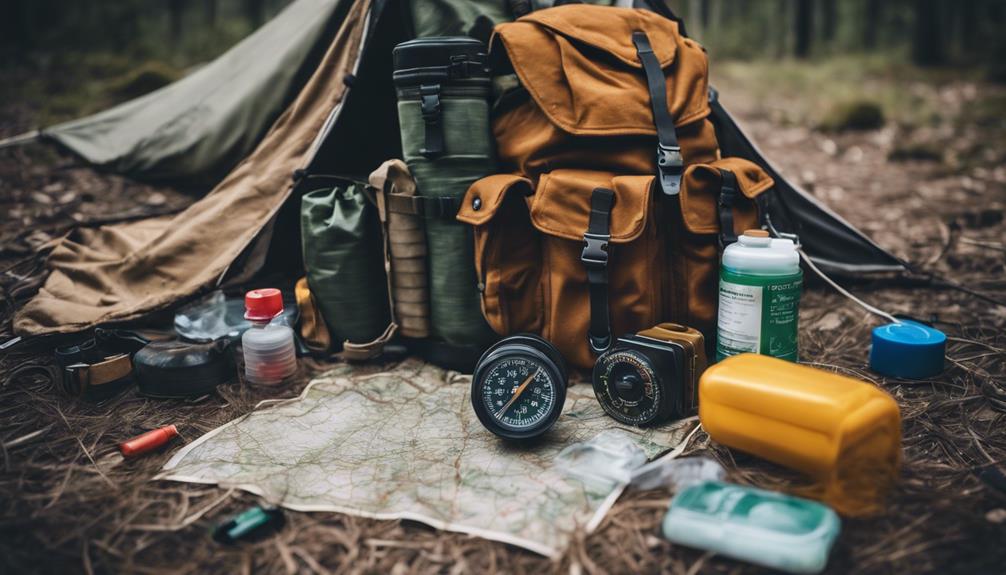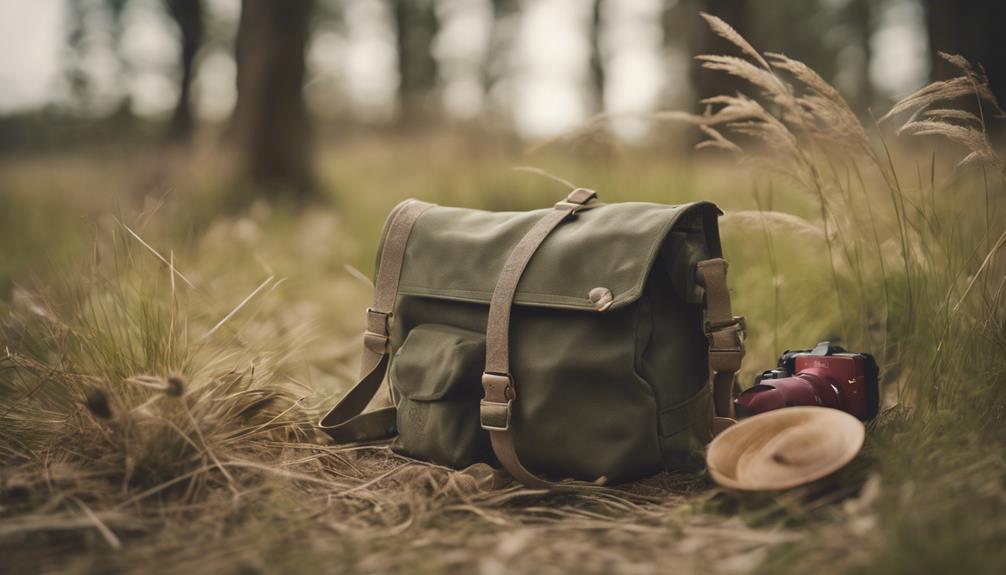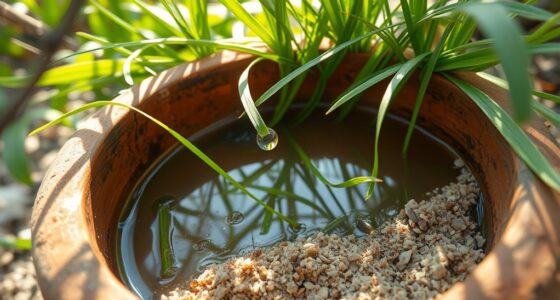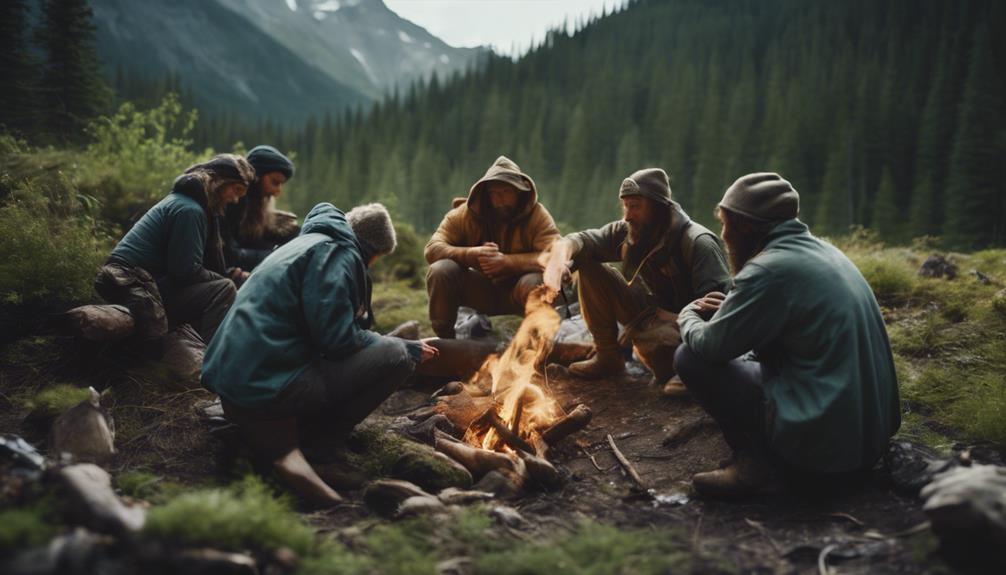Get ready for any emergency with the ultimate preppers list – your key to survival. Plan for the unexpected by stocking up on food, water, and essential tools like hammers and nails. Guarantee clean drinking water using purification tablets and portable filtration systems. Grow your own food and master preservation techniques for self-sufficiency. Fire for warmth, cooking, and signaling is vital, so pack fire-starting tools. Dress warmly with insulated jackets and sturdy boots, and build shelters with tarps and emergency blankets. Stay secure with reliable transportation and backup plans. This list equips you for whatever challenges come your way.
Key Takeaways
- Stockpile non-perishable food, water, and essential supplies.
- Invest in tools, protective gear, and fire-starting equipment.
- Prioritize self-sufficiency in food production and preservation.
- Ensure adequate clothing, shelter materials, and emergency transportation.
- Establish security measures and evacuation plans for comprehensive preparedness.
Reasons for Prepping
Prepare for the unexpected with prepping, as it guarantees you're equipped to handle emergencies effectively. Having a well-thought-out emergency plan is essential to make sure you and your loved ones are safe during challenging times.
One essential aspect of prepping is maintaining a sufficient food supply. Stock up on non-perishable items like canned goods, dried fruits, and protein bars to sustain yourself when access to fresh food is limited. Additionally, investing in water containers is important for storing clean drinking water, as hydration is key to survival. Be sure to have enough containers to hold an adequate amount of water for each person in your household.
In times of crisis, having these basic supplies readily available can make a significant difference in your ability to endure and overcome challenges. By preparing in advance and having a well-stocked emergency kit, you're setting yourself up for a greater chance of survival and resilience in the face of unforeseen circumstances.
Essential Tools for Construction and Protection

Constructing shelters and ensuring safety during emergencies require essential tools and protective gear. Construction tools like hammers, nails, saws, and duct tape are essential for building sturdy shelters and securing structures.
Protective gear such as work gloves, safety goggles, dust masks, and ear protection help prevent injuries and hazards. Tarps, ropes, and bungee cords are handy for creating temporary shelter, covering supplies, and securing items.
Multi-tools with various functions like cutting and sawing can be versatile for construction and repair tasks. Additionally, fire extinguishers, smoke alarms, and carbon monoxide detectors are crucial for fire safety and early detection in emergency situations.
Make sure to have these items readily available in your emergency kit along with water, food, and a first aid kit to ensure you're well-prepared for any construction or protection needs that may arise during a crisis.
Importance of Water Provision

Ensuring access to an adequate water supply is paramount for your survival during any emergency situation. Storing at least 1 gallon of water per person per day is recommended for emergency preparedness. Water purification tablets play an essential role in guaranteeing safe drinking water when clean water sources are scarce. These tablets can effectively eliminate harmful bacteria and viruses, making contaminated water safe to drink. Remember to check the shelf life of your emergency supplies, including water purification tablets, to guarantee they're ready for use when needed.
Investing in stackable 5-gallon water containers is ideal for storing water for long-term survival situations. These containers are durable and efficient for storing large quantities of water. Additionally, consider including LifeStraws in your emergency kit. These portable water filters can provide clean drinking water on the go, offering a convenient solution for staying hydrated during emergencies.
Don't forget to replenish vital nutrients with electrolyte hydration powder during times of limited water access. Proper hydration is crucial for maintaining your health and well-being in survival scenarios.
Food Supply Self-Sufficiency

To achieve food supply self-sufficiency, start by growing your own vegetables and fruits for long-term sustainability.
Preppers prioritize sustainable food sources such as hunting, fishing, and raising livestock for meat.
Guarantee you have a backup supply by storing non-perishable food items and mastering food preservation techniques like canning, drying, and fermenting.
Food Storage Methods
For achieving self-sufficiency in your food supply during emergencies, mastering various food storage methods is essential. Canned food is a reliable option as it can last for an extended period, providing essential nutrients to keep your body nourished.
Techniques like dehydrating and vacuum sealing help preserve food, while root cellars, freeze-drying, and fermenting are effective ways to store food for longer durations.
Rotation of stored food is critical to guarantee freshness and prevent waste in your emergency food supply. Proper labeling and organization of stored food items are also important for easy access and inventory management.
Growing Your Own
Achieving self-sufficiency in your food supply during emergencies can be accomplished by growing your own fruits and vegetables. Vegetable gardening offers a reliable source of fresh produce, ensuring you have nutritious food available when stores may be inaccessible. By cultivating your own crops, you reduce dependence on external food sources, enhancing your resilience in times of crisis.
Gardening skills empower you to grow a variety of fruits and vegetables, allowing for a diverse and balanced diet essential for survival. Homegrown produce also provides essential nutrients, vitamins, and minerals necessary for your well-being during emergency situations.
In addition to food, consider other aspects of emergency survival such as personal hygiene and access to clean water. Having water filters on hand can help guarantee a safe drinking supply, while maintaining good personal hygiene practices is critical for overall health and well-being.
Fire as a Shelter Element

Fire plays a vital role in your shelter setup. It provides warmth, cooking capabilities, and a means to signal for help in emergencies. It offers physical comfort and psychological support during challenging times.
Additionally, a well-managed fire can ward off predators and insects, enhancing your safety within the shelter.
Fire for Warmth
Essential for survival in harsh conditions, fire serves as an indispensable element in providing warmth and protection, especially in emergencies.
In an emergency situation, ensuring that you can keep yourself and your family members warm is vital for survival. A good quality fire not only provides warmth but also acts as a deterrent against predators. It can be the difference between life and death when temperatures drop or when you need to signal for help.
When preparing for such scenarios, having the right tools to start a fire is paramount. Items like matches, lighters, or fire starters should be included in your survival kit. Knowing how to build and maintain a fire safely is equally important to prevent accidents.
It's not just about the initial flame; it's about keeping it going to provide the heat and light you need. Remember, fire isn't just a source of warmth; it's a lifeline in challenging situations.
Fire for Cooking
When preparing for emergencies, having the ability to utilize fire for cooking not only sustains you but also serves as an essential element for shelter. In survival situations, fire is vital for cooking food, purifying water, and providing warmth. It can also act as a signaling device to attract help or deter predators.
To make sure you're prepared, include fire-starting tools like lighters, matches, and fire starters in your emergency kits. Additionally, portable stoves or camping cookers can be valuable for safe and controlled cooking with fire, especially in challenging conditions.
Building a fire shelter is another important aspect to take into account. Constructing a fire shelter can provide protection from the elements and help maintain body temperature in extreme conditions. By using natural materials like branches, leaves, and tarps, you can create a shelter that not only shields you from the weather but also retains heat from the fire.
Necessary Clothing Selection

When preparing your ultimate preppers list, prioritize selecting warm and functional clothing items for various survival scenarios. For cold weather survival, choose insulated jackets, thermal underwear, and wool socks to keep you warm.
Durable pants, moisture-wicking shirts, and sturdy boots are essential for outdoor activities in any weather conditions. Include rain gear like waterproof jackets, ponchos, and rain pants to stay dry and prevent hypothermia. In case of wet conditions, these items will help you stay comfortable and avoid illnesses.
Additionally, consider clothing for epidemics such as disposable gloves, face masks, and protective suits to guarantee personal protection during health crises.
Remember to pack extra clothing layers, hats, gloves, and scarves for added warmth and protection in emergency situations. These items can make a significant difference in your comfort and safety when facing unexpected challenges.
Shelter Building Materials

Consider incorporating a variety of shelter building materials, such as tarps, emergency blankets, and tents, to guarantee protection from the elements in survival situations. Keep in mind that durable materials like paracord, bungee cords, and duct tape are essential for securing shelters effectively.
Make sure to grab insulating materials such as emergency sleeping bags and thermal blankets to help retain body heat and stay warm. When selecting shelter building materials, opt for lightweight and portable options that are easy to transport during emergencies. These materials should be compact, versatile, and simple to set up, ensuring quick shelter solutions when needed.
Transportation and Security Measures

To guarantee your preparedness in survival scenarios, secure transportation options and implement security measures to protect your assets.
Having a reliable vehicle with a full tank of gas is essential for evacuating during emergencies. Consider including bicycles or walking gear as backup transportation in case of fuel shortages or road blockages. It's vital to establish emergency evacuation routes and alternative travel plans in advance to make sure smooth movement.
Additionally, implementing security measures such as locks, alarms, and surveillance systems can safeguard your transportation assets from theft or damage. In the event that the power goes out, having solar-powered options can provide a sustainable solution for transportation needs.
Remember to plan for at least one mode of transportation per person in your group to ensure everyone can move quickly and efficiently during crises. By incorporating these transportation options and security measures into your prepping plan, you increase your chances of successfully handling challenging situations.
Frequently Asked Questions
What Does Every Prepper Need?
You need to prioritize essentials like food, water, shelter, and first aid supplies. Self-sufficiency tools for hunting, fishing, gardening, and fire starting are essential. Personal protection gear like firearms, ammunition, and emergency kits are necessary for survival.
What Are 10 Items in a Survival Kit?
For a well-rounded survival kit, you should pack essentials like water purification tablets, a multi-tool, first aid kit, flashlight, whistle, non-perishable food, battery-powered radio, extra batteries, personal hygiene items, and sanitation supplies. Customize for your needs.
What Are the Prepper Priorities?
When prepping for survival, your priorities are like building blocks: water for life, food for strength, shelter for safety, security for peace, and communication for connection. Focus on these essentials to weather any storm.
What Is the Most Important Thing to Prep?
When prepping, the most essential item to prioritize is water. You can only survive 3 days without it. Aim for 1 gallon per person per day for drinking and sanitation. Don't forget purification methods for safe consumption.
Conclusion
To sum up, prepping isn't just about being ready for the worst, but also about being self-reliant and prepared for any situation. By ensuring you have the necessary tools, resources, and skills, you can increase your chances of survival in an emergency.
Just like a well-prepared camper always has a backup plan for unexpected weather, a prepper is always equipped to face whatever challenges come their way. Whether that means having extra supplies, honing essential skills, or staying informed about potential risks, preppers are always one step ahead. One fun and educational way many preppers enhance their knowledge is through activities like the *preppers survival crossword challenge*, which tests their understanding of key survival concepts. By staying sharp and informed, they ensure they’re ready, come what may.
Stay prepared, stay safe.










